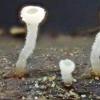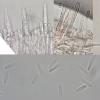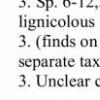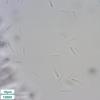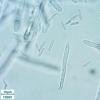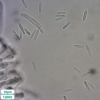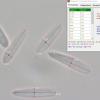
29-08-2025 05:16
 Francois Guay
Francois Guay
I think I may have found the teleomorph of Dendros

29-08-2025 19:04
Thomas FlammerSpores 21.2 - 26.2 x 8.3 - 11.3 µm - Q: 2.20 - 2.

28-08-2025 17:24
Thomas FlammerI know, that this is not the real topic of this fo

27-08-2025 12:02
Pavol PaloHello dear friendsI would like to ask for sharing

25-08-2025 17:37
 François Freléchoux
François Freléchoux
Bonjour,Nous avons trouvé samedi dernier à l'ét

20-08-2025 19:04
Ethan CrensonHello, This asco was found on the same wood as my
(6.7) 8.2 - 10.4 (11.4) × (2.0) 2.05 - 2.6 (2.8) µm
Q = (3.2) 3.6 - 4.5 (4.7) ; N = 37
Me = 9.2 × 2.3 µm ; Qe = 4.0
The paraphyses are 50-65 x 4.7-6, with one or two bigger and some smaller droplets, protruding some 15-25 µm.
With these features I end up in subkey 4 of Zotto's key and there step 3 with three lignicolous species and an "unclear collection from Filipendula". This one was most probably growing on Filipendula ulmaria on a wet and swampy lake shore.
I compared to an L. pudibundum i found some weeks ago (on Prunus padus) and the main difference seems to be that the hairs are not capitate (with the exception of one hair) and the paraphyses are marginally more protruding. Is a host switch to Filipendula possible for L. pudibundum?





